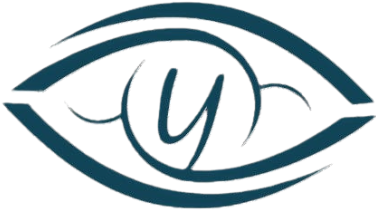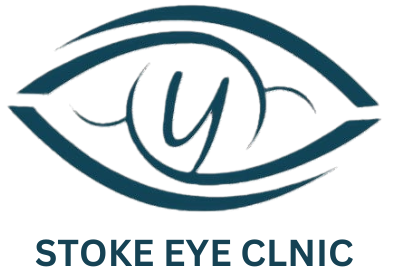Entropion
- Home
- Entropion
What is an Entropion?
Entropion is a condition where the lower eyelid turns inward towards the eye, causing the eyelashes to rub against the cornea. This abnormality can disrupt the normal function of the eyelid, leading to irritation and potential damage to the eye because the eyelashes and skin are in constant contact with the cornea. Common symptoms include excessive tearing, redness, and a sensation of something in the eye. Entropion is most commonly associated with aging due to muscle weakness and relaxation of eyelid tissues, but it can also result from facial palsy, scarring, or previous surgeries. Treatment is crucial to relieve discomfort and prevent damage to the cornea and infections, with surgical procedures often recommended to restore the eyelid’s normal position.

Symptoms
Redness
Irritation
Watering
Light Sensitivity
What causes Entropion?

Age-related
The most common cause, where the tissues of the eyelid lose elasticity and muscle tone due to natural aging processes, leading to an inward turning of the eyelid.

Spasm/Inflammation
Sometimes, muscle spasms in the eyelid or chronic inflammation can temporarily or permanently cause the eyelid to turn inward. Conditions like blepharitis or trachoma can contribute to such changes.

Scarring
Scarring of the inner eyelid, which can result from chemical burns, inflammatory diseases, infections, or trauma, can lead to entropion. Scar tissue can contract, pulling the eyelid inward.

Congenital
Some individuals are born with entropion, often due to developmental issues affecting the muscles or skin around the eyelids.
Entropion Treatment
What are the risks?
Infection
Scarring
Overcorrection or Undercorrection
Bleeding
Changes in Eyelid Position
Dry Eye Symptoms

4 Tips to Improving Success
Achieve better outcomes with expert surgeons, advanced procedures, and a commitment to quality care. Our focus on precision, efficiency, and timely surgeries ensures your vision restoration is in trusted hands.
The Surgeon
The success of entropion repair largely depends on the expertise of your eye surgeon. As a consultant eye surgeon with extensive experience in eyelid corrections, I provide a meticulous and secure surgical experience. You can be assured that your procedure will be conducted with precision, aiming for the best possible outcomes.
The Procedure
Entropion repair is typically very safe and is performed on an outpatient basis. This surgery involves correcting the inward turning of the eyelid, often through procedures that may include tightening the affected muscles or tendons under local anaesthesia. I will guide you through the entire process, clearly explaining each step to ensure your comfort and understanding.
Quality Surgery
Achieving optimal results in a single procedure is crucial. As a Consultant Ophthalmic Surgeon with specialized expertise in eyelid surgeries, I am committed to delivering top-notch care and ensuring the best possible functional and aesthetic outcomes for your eyes.
Prompt Treatment
For entropion, it is essential to address the condition promptly when symptoms such as irritation and vision obstruction affect your daily life. I ensure a swift progression from your initial consultation to the surgical correction, often scheduling your procedure within a brief time frame to effectively restore both the function and appearance of your eyelid.
Entropion FAQs
What are the benefits of entropion repair?
Entropion repair significantly improves both eye health and comfort. Key benefits include:
⦁ Protection and Lubrication: Correcting the inward turning of the eyelid allows it to properly cover the eye, helping to maintain lubrication and protect against dryness, irritation, and infection.
⦁ Reduced Discomfort: Patients often experience relief from the constant irritation caused by eyelashes rubbing against the cornea. After surgery, symptoms like pain and the sensation of foreign objects in the eye typically diminish.
⦁ Improved Eye Health: Repairing the eyelid position can prevent further damage to the cornea and reduce the risk of corneal ulcers or scratches.
⦁ Enhanced Vision: By stopping the irritation of the cornea, visual clarity can improve, and secondary vision issues can be mitigated.
⦁ Cosmetic Improvement: Entropion repair can enhance the overall appearance of the eyes by restoring the natural position of the eyelids.
What are the risks with entropion repair?
While generally safe, entropion repair carries certain risks, including:
⦁ Infection: Potential for infection at the surgical site, typically manageable with antibiotics.
⦁ Scarring: Possible visible scarring, although techniques aim to minimize this risk.
⦁ Overcorrection or Undercorrection: May require additional interventions to achieve the desired eyelid position.
⦁ Bleeding: Minor bleeding is common; however, excessive bleeding may lead to complications.
⦁ Changes in Eyelid Position: Unintended alterations in eyelid angle or contour could affect appearance and function.
⦁ Dry Eye Symptoms: Increased symptoms of dry eye which may necessitate further treatment.
How do I prepare for entropion surgery?
What happens during entropion surgery?
Is entropion surgery painful?
What can I expect after entropion surgery?
How long is the recovery period after entropion surgery?
When can I return to work after entropion surgery?
How do I care for my eye after entropion surgery?
What should I do if I experience complications after entropion surgery?
- info@bramptonmedical.co.uk
- 01782 614174
- 36 Hanover St, Newcastle-under-Lyme, Newcastle ST5 1AU
- Clayton Rd, Newcastle-under-Lyme, Newcastle ST5 4DB
- © 2024. All rights reserved
- Terms & Conditions
- Where I work
- Brampton Medical
- Designed & Developed by احمد

